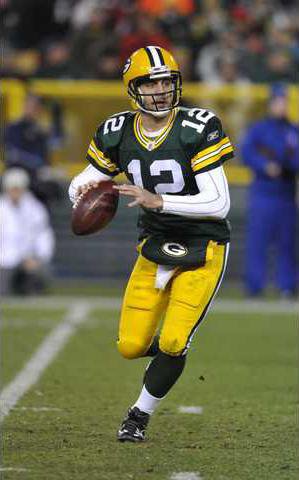KANSAS CITY, Mo. (AP) — The play has become a Green Bay Packers staple: Aaron Rodgers drops back, lofts a pass down the sideline and one of his talented receivers turns around at precisely the right time and hauls it in around the unsuspecting cornerback.
The back-shoulder fade may be the most difficult play to defend in the pass-happy NFL.
Rodgers and unbeaten Green Bay do it better than anybody.
“That’s been one of the hardest routes to stop in football for a long time now,” Kansas City cornerback Brandon Flowers said. “You just have to be in good position to defend the football. There’s no way to coach how to stop the back shoulder. You just have to compete for the ball.”
There are ways to stop it, of course — exotic blitzes, jamming wide receivers. It’s just that nobody has been able to stop the Packers when their star quarterback calls for the timing pattern.
“That’s one of the most difficult pass routes to stop, for any defensive back in the league,” Chiefs defensive back Travis Daniels said. “I think pretty much anybody would say that back-shoulder fade is hard to stop. And they kind of perfected that pretty good.”
The play’s success starts with Rodgers, who will try to get Green Bay to 14-0 when he faces the Chiefs on Sunday in Kansas City.
He’s already thrown for 4,125 yards and 39 touchdowns with only six interceptions, for a rating of 123.3 — third-best through 13 games since the 1970 merger. His completion rate of 69.6 percent is second behind New Orleans’ Drew Brees, making him one of the game’s most accurate passers.
“You better get some rush,” said Chiefs defensive coordinator Romeo Crennel, who was appointed interim coach earlier in the week after the firing of Todd Haley. “If you’re able to get some rush you might be able to defend against it so he won’t be able to put it exactly where he wants it.”
That means the Chiefs might come after Rodgers with an assortment of blitzes.
The problem is that he’s even better when he’s hurried.
Rodgers completes 67.6 percent of his passes when he’s blitzed, averaging better than 12 yards per attempt, for a quarterback rating of 134.6. The next-best player in the league against the blitz is the Patriots’ Tom Brady, who completes 61.5 percent of his throws for 9.76 yards per attempt.
“That throw is so hard to defend because you’re in position, you’re running with the guy and the ball is thrown to the back shoulder,” Crennel said. “That’s very hard.”
Flowers said the biggest thing the Chiefs can do to slow the aerial attack down is study game film, which might give them a clue as to when the wide receivers will look for the ball.
The problem is that it happens at different times on each play — sometimes just 15 yards down field, sometimes 30 or 40. And it varies depending on whether it’s Jordy Nelson, Donald Driver or one of the other wide receivers matched up with the Kansas City cornerbacks.
“They’re always on the same page,” Flowers said. “If you’re over the out route, the receiver knows where Rodgers is going to put it. You can tell they just practice, practice, practice the things they’re going to do in the game, so you can’t be too relaxed out there. You have to be on top of your game all the time, because they’re going to come after you.”
Daniels acknowledged that getting pressure on Rodgers is important, but he said the best way to slow down the back-shoulder fade is to jam the wide receivers at the line of scrimmage.
By knocking them off their routes, the defense causes the timing to be off.
“We have to get our hands on their guys and slow them down,” Daniels said, “because that’s pretty much a timing route. He throws it to a certain yard line and if we’re able to re-route receivers and get a jam on them, hopefully we can slow them down.”
Daniels bristled when the play was brought up because it always looks like the defensive back is at fault when the wide receiver makes an acrobatic catch. Usually, it’s a breakdown across the defense that allows the play to go for big yardage.
“You can’t put it on the safety because it might not be his play, or the cornerback, because it might not be his play,” Daniels said. “All those things depend on the coverage.”
The Chiefs are already hamstrung in the defensive backfield, having lost Pro Bowl safety Eric Berry to a season-ending knee injury in Week 1. Backup safety Jon McGraw could join him on IR because of a high ankle sprain, which means Reshard Langford will start alongside Kendrick Lewis.
Crennel said he has confidence in their ability, along with Flowers, Daniels and cornerback Brandon Carr, to at least slow down one of the league’s best passing attacks.
Even if they might not always be able to stop one of its toughest plays.
“If our team, in all phases, plays at a high level, not turning the ball over, not giving up easy scores, that gives us the best chance of winning,” Crennel said. “If Rodgers is on the field too long, we’re going to be in trouble.”
MAJOR TASK
Chiefs trying to figure out how to stop Rodgers





